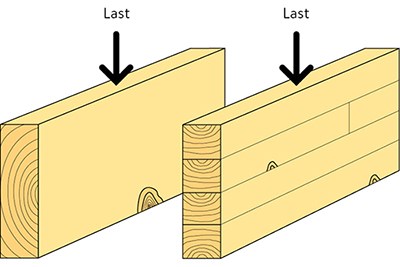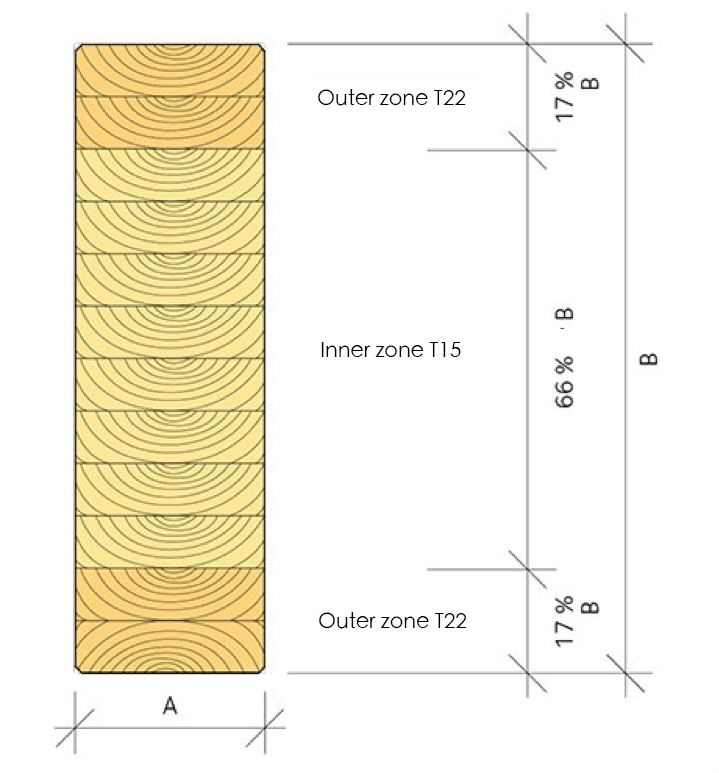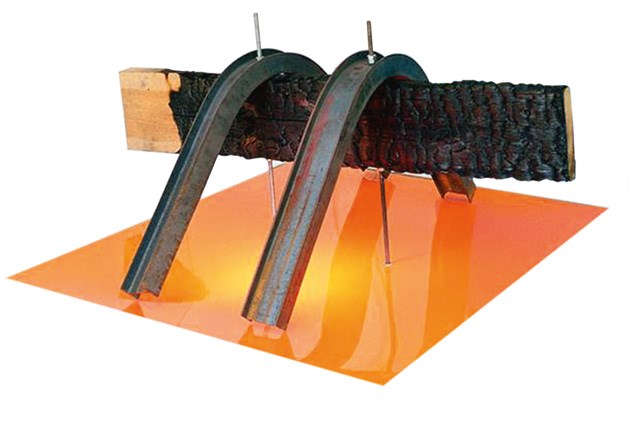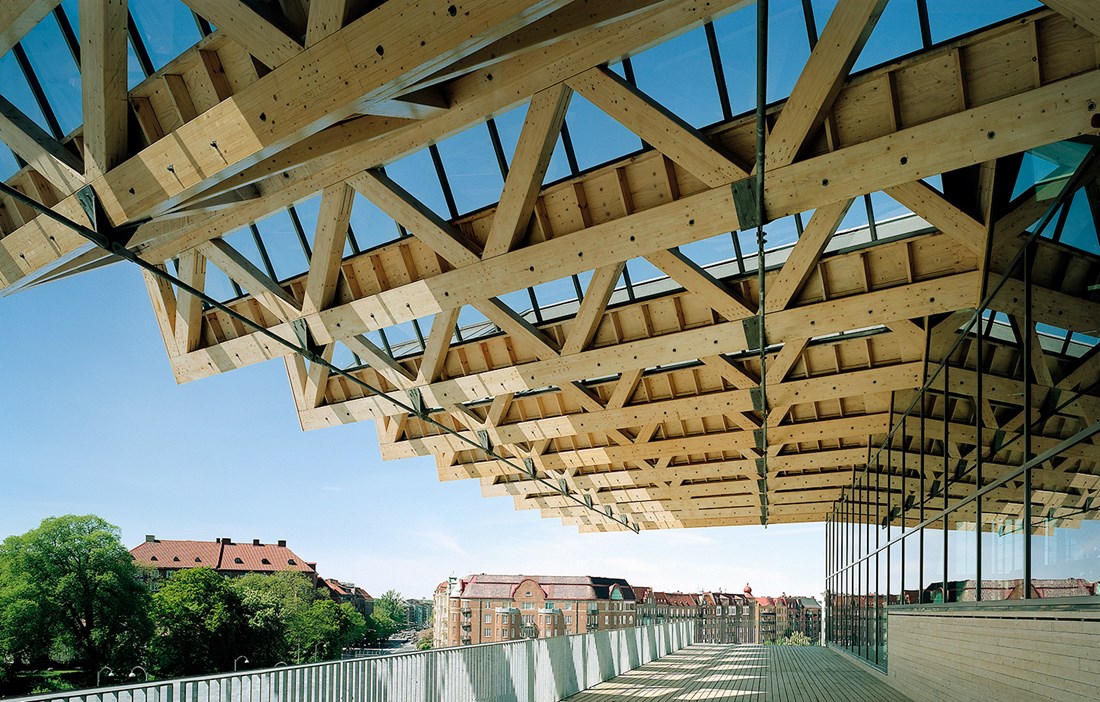Choosing glulam
This section offers advice on how to use glulam, as well as general advice on issues such as handling, storage, surface treatment and maintenance.
A few key points that you should be aware of:
Regular construction timber makes efficient use of the material, but production-controlled glulam is even more resource-efficient – for two main reasons:
- The lamination effect. A defect in one glulam laminate is not of the same crucial importance as corresponding defects in solid wood, giving glulam higher strength values.

The lamination effect for glulam: In glued laminated wood, there is only a small risk of defects, such as large knots, occurring in the same cross-section. In a solid wooden beam, however, a single knot can significantly impair its strength.
- Glulam may be manufactured with outer laminates of higher quality than the inner laminates. This makes for optimum use of the wood material, since the stresses tend to be greatest in the outer parts of the glulam cross-section.

Composition of beam in combined glulam GL30c
The outer zones, i.e. 2 x 17% of B, should be T22. The inner zone, i.e. 66% of B, should be T15.
Manufactured under controlled conditions, glulam is mainly a construction material. The established glulam manufacturers in Sweden are certified by SP Technical Research Institute of Sweden in Borås. The glulam production process uses adhesive that complies with SS-EN 301 both for the finger-jointing of individual laminates and to bond the laminates. Glulam can generally be used for the interior and the exterior. When using it outdoors, glulam should be protected under a roof like other load-bearing timber.
Glulam is available in a range of appearance grades and a large number of stock dimensions. Straight lengths use 45 mm laminates, and curved ones usually use 33 mm. The wood is high quality, strength-graded Swedish spruce.
The standard SS-EN 14080 sets out requirements concerning the constituent components plus minimum requirements for the manufacture of glulam for load-bearing structures.
Moisture control
Glulam products are manufactured and supplied with a target moisture content of max 16%. The protective packaging should remain in place as long as possible, until the glulam has been furnished with its permanent weather protection. If moisture is discovered within the packaging, it should be cut open on the underside to prevent the continued collection of moisture and allow the existing moisture to dry out.
The moisture content should be checked on reception and then when encasing and before painting.
Fire safety
Wood in large dimensions remains relatively stable in a fire, as an insulating charcoal layer forms on the surface. Since glulam is manufactured in relatively large dimensions, it meets the usual fire safety standards. Glulam has a fire safety classification for use as a structural material in buildings and civil engineering.
 In contrast to unprotected steel, wood retains its load-bearing capacity in a fire
In contrast to unprotected steel, wood retains its load-bearing capacity in a fireFor optimum use, observe the following advice when ordering glulam:
- Choose CE marked glulam
- If possible, use stock products.
- Choose lengths that allow regular transport.
- Choose the appearance class based on actual need.
- Use standard fixings as far as possible.
- Architects and structural engineers, use The glulam handbook 1 – 3 for planning!

